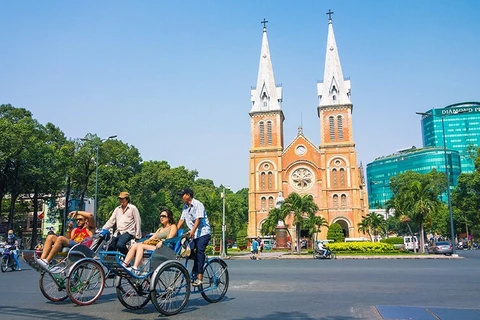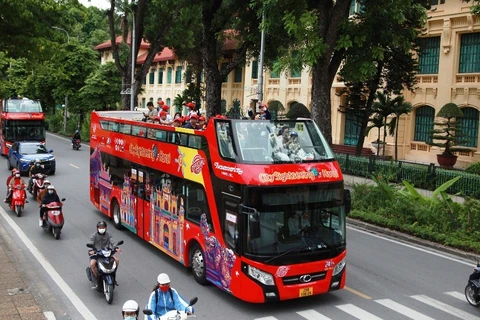Nghe An (VNA) – The central province of Nghe An boasts much potential for community-based tourism, but still needs support policies to facilitate this type of tourism.
Community-based tourism not only helps diversify products and enrich experiences for travellers but is also useful for the sustainable development of local communities and the preservation of cultural identities.
Tien Ky commune of Tan Ky district is home to Mount Pu Loi 1,100m above sea level, along with a system of limestone mountains and imposing but poetic caves. Located at its foot is Mo Cave where vestiges of primitive humans were found.
In this commune, Phay Thai Minh village is one of the destinations chosen to develop community-based tourism. All local residents are Thai ethnic people who still uphold their cultural identities.
Once coming here, visitors will have a chance to live a traditional life of Thai people by staying on stilt houses, tasting traditional dishes, trying brocade making, and watching the Tien Dong liquor production process.
Despite active efforts, Phay Thai Minh village and Tien Ky commune as a whole are still facing numerous difficulties to foster tourism.
Nguyen Van Thach, Chairman of the communal People’s Committee, said limited capital is the biggest obstacle, noting that Tien Ky hasn’t gathered enough funding for inviting experts to give guidance on tourism development.
 Women in Xieng village of Mon Son commune, Con Cuong district, have revivied the traditional brocade weaving to diversify tourism products. (Photo: VNA)
Women in Xieng village of Mon Son commune, Con Cuong district, have revivied the traditional brocade weaving to diversify tourism products. (Photo: VNA) The factors necessary for tourism development have yet to be in place sufficiently, especially transport infrastructure linking places of interest. Besides, essential services remain modest, the commune hasn’t created its own typical products, while local tourism workers still lack relevant knowledge and skills, he noted.
In Con Cuong district, this type of tourism is currently available in Khe Ran village (Bong Khe commune), Nua and Pha villages (Yen Khe commune), and Xieng village (Mon Son commune).
Since 2016, specialists from the Japan International Cooperation Agency (JICA), under a livelihood diversification project, have assisted local residents to develop community-based tourism and set up groups of service suppliers. Thanks to that, locals have made use of their advantages to develop livelihoods and raise income.
However, such sites in Nghe An are still small and haven’t been connected with one another to form a network of community-based tourism. The experiences they offer are yet attractive enough to persuade travellers to stay for a long time.
Tran Cong Hien, deputy head of the culture division of Con Cuong, said the district hopes provincial authorities will issue mechanisms, policies, programmes, and projects for developing tourism, especially community-based.
It is also necessary to increase training service providers in environmental protection and tourism knowledge, assist with product marketing, and design new tours to attract holidaymakers to Con Cuong, he added.
Meanwhile, some experts held that to sustainably develop community-based tourism, it is important to include tourism development in policies on regional development, community development, new-style rural area building, agriculture and rural development, cultural heritage preservation, and human resources training. Localities should also upgrade infrastructure and transport facilities, support manpower training, develop services, revive traditional crafts, and form chains of community-based tourism connectivity./.

























